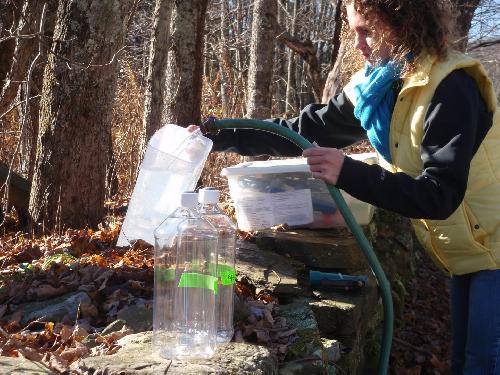Dramatic videos created by environmental activists shows tap water being set on fire. In some cases, they were clear hoaxes, in others it turned out to be methane unrelated to drilling. Yet regardless, the belief is that natural gas fracturing (fracking), or conventional extraction, can reach drinking water. Scientists disagree, though conceding that anything can happen in the right circumstances, without it being indicative of the process.
Natural gas consists primarily of methane, a greenhouse gas that's 23 times more potent than carbon dioxide, but far shorter-lived. As CO2 emissions have dropped, environmental groups have turned on the natural gas they used to embrace, and have tried to raise money alleging it causes tap water to erupt in flame, as in the film "Gasland."
Cases where it has happened were not due to fracking, but instead involved the integrity of the well in older drilling operations, such as the cementing used to isolate it from the surrounding rock and water or the steel casing that allows gas and oil to flow upwards.
Blaming fracking for that is like blaming fracking for a truck accident that happens on the highway.

The Parker County, Texas, in the picture above, was a case of bad construction, not a fundamental problem with extraction. The cement sub-contractor placed it very near the surface and deep underground, but put nothing for 4,000 feet in between. The gap allowed gases to move up and down freely like a chimney and contaminate the drinking-water supply.
Fracking wells are instead installed a mile or more below the surface, far from underground sources of drinking water. Yet one study claims that at least 2,600 wells in U.S. have depths shallower than 3,000 feet, some just hundreds of feet below the surface. The exceptions define the debate, and in a high-profile case in Pavillion, Wyoming, the U.S. Environmental Protection Agency (EPA) claimed that shallow fracking operations had released natural gas into freshwater aquifers. They were extracting at 1,000 feet while people were getting water at 750 feet.
In California, some wells are drilled into aquifers located less than 2,000 feet below the surface.
It is a given that any drilling can indirectly cause methane, but it is happening as often as activists contend in fundraising campaigns?
"The answer to that question is usually 'no,' but there are exceptions," said Stanford Professor Rob Jackson, a professor of Earth system science at Stanford University, who presented his findings at the annual meeting of the American Association for the Advancement of Science (AAAS) in Washington, D.C.





Comments